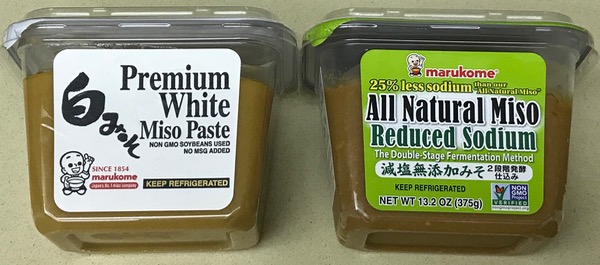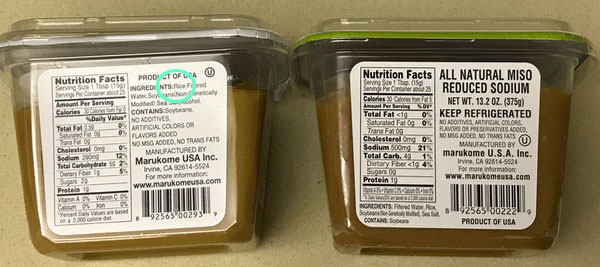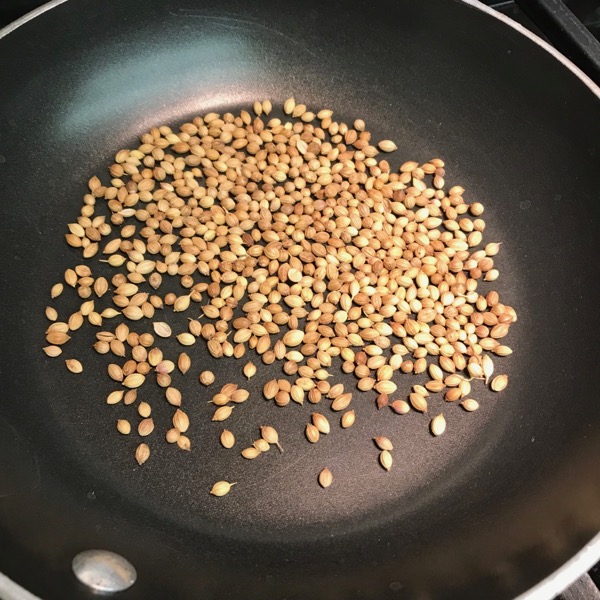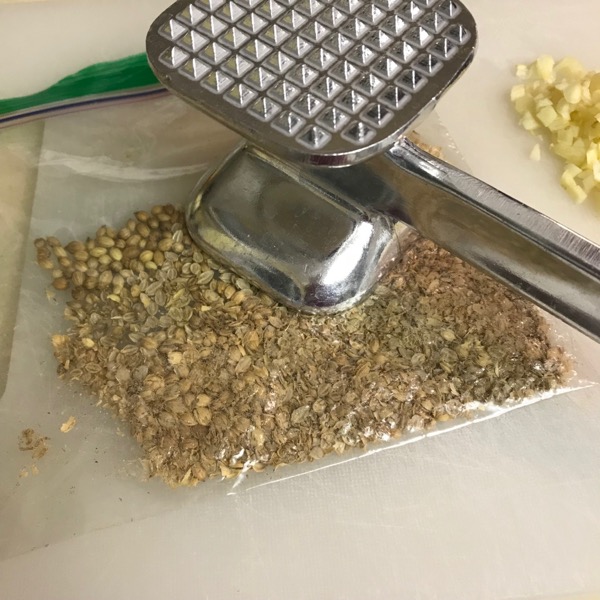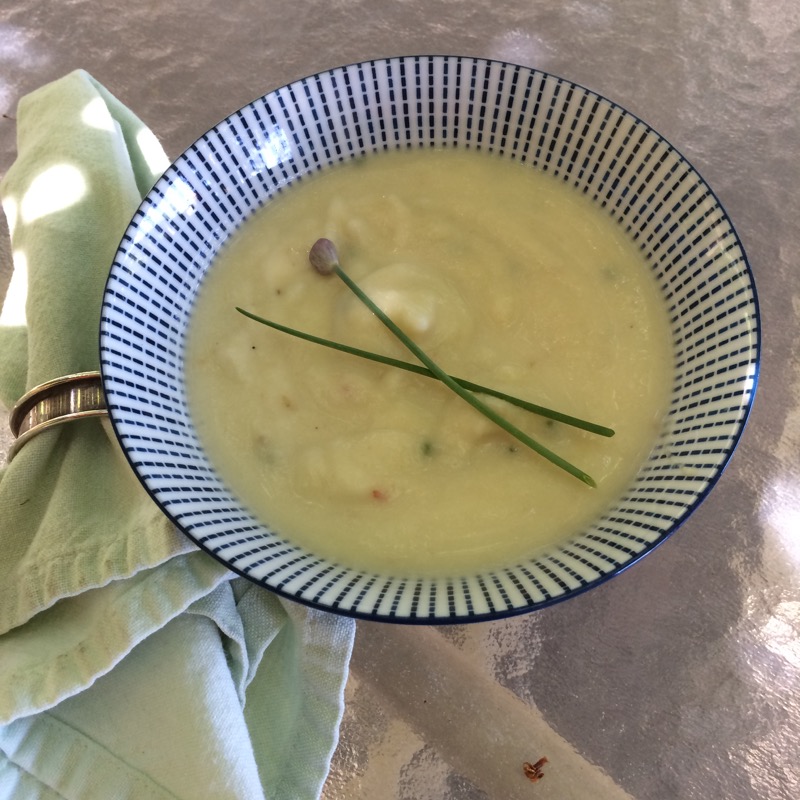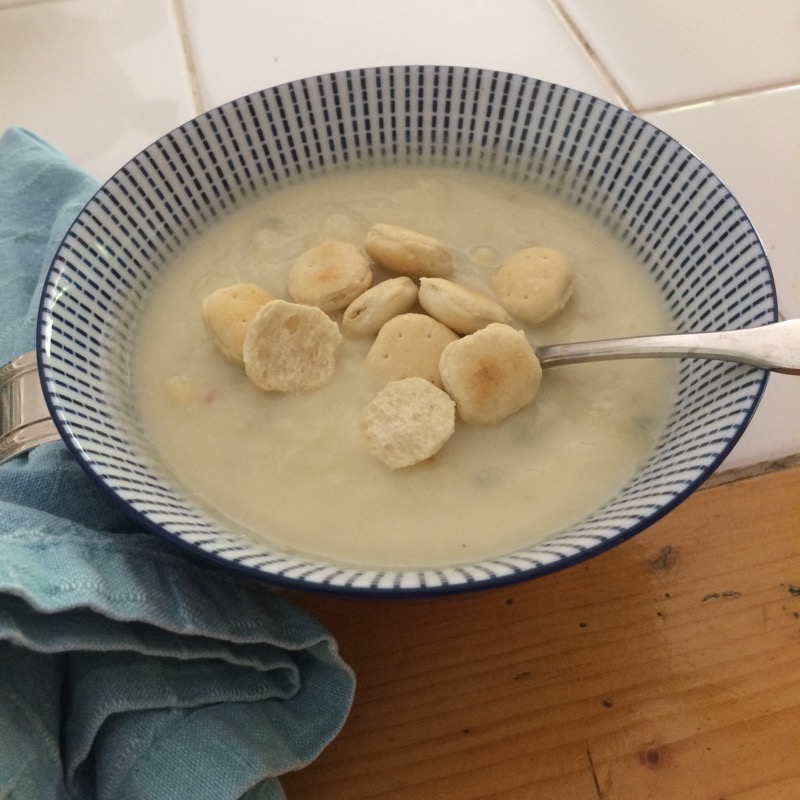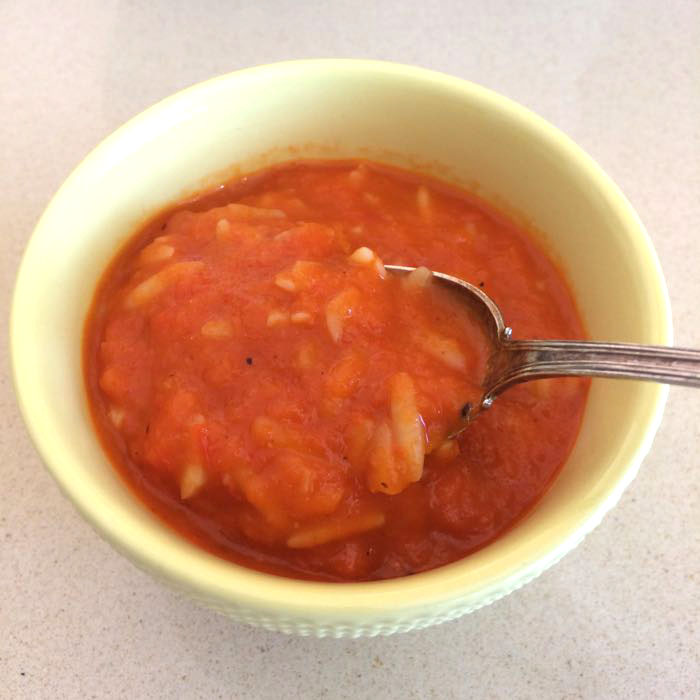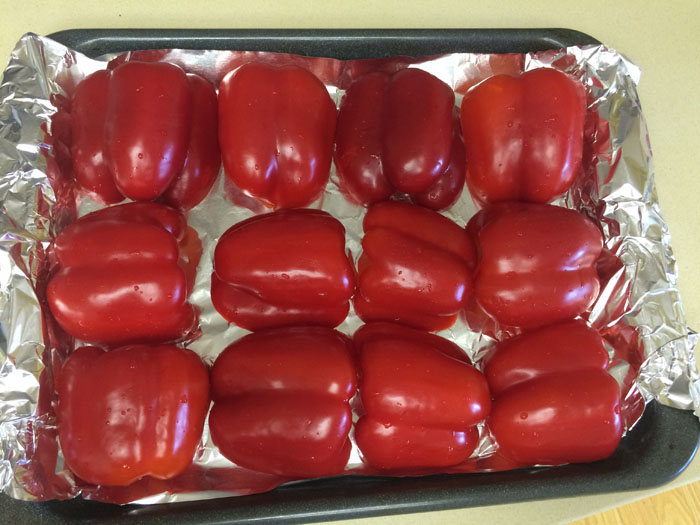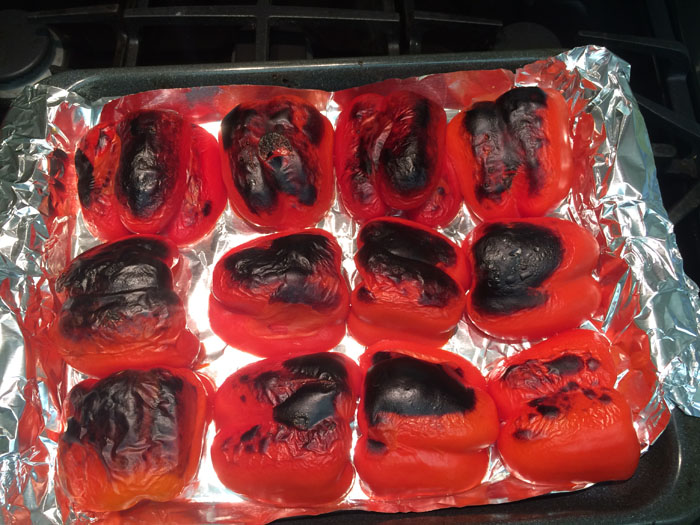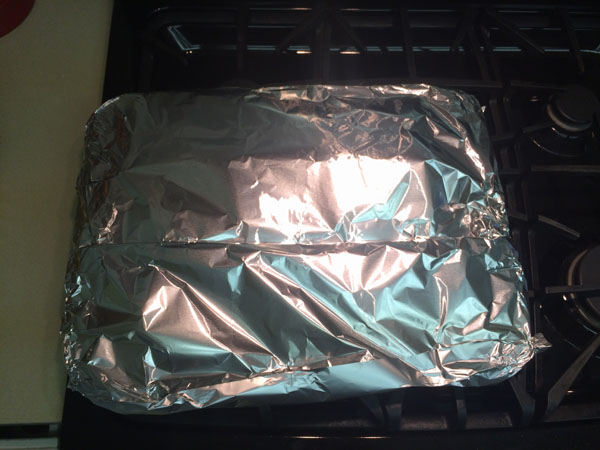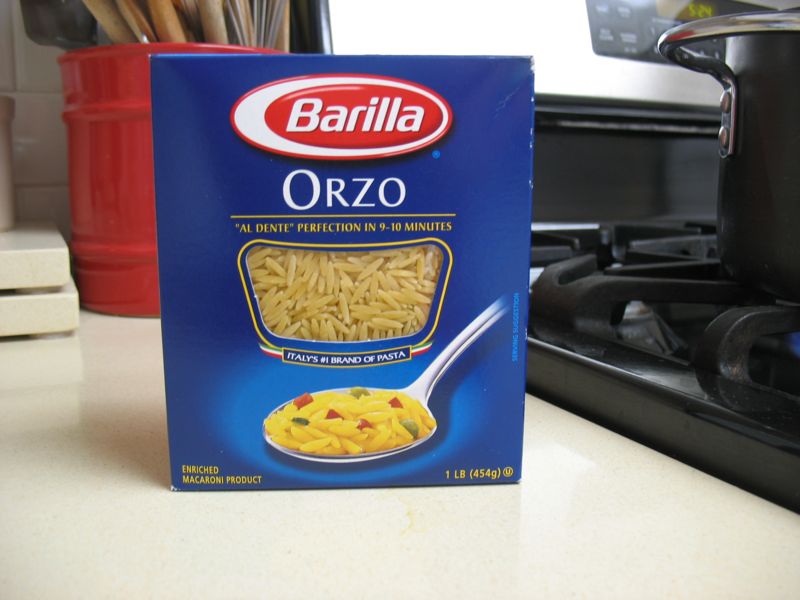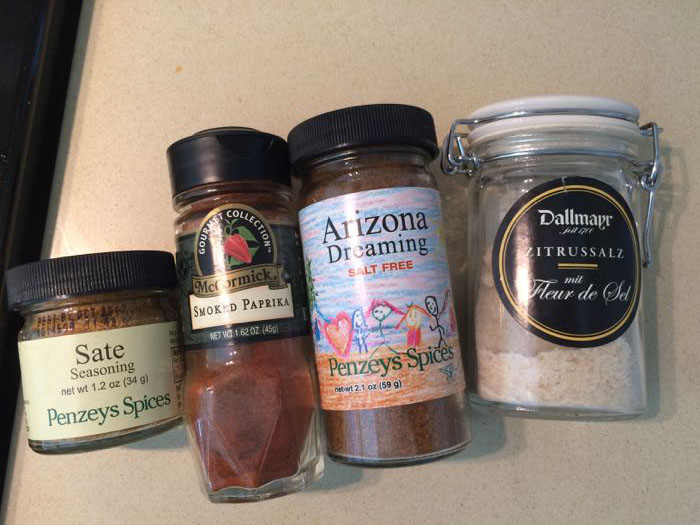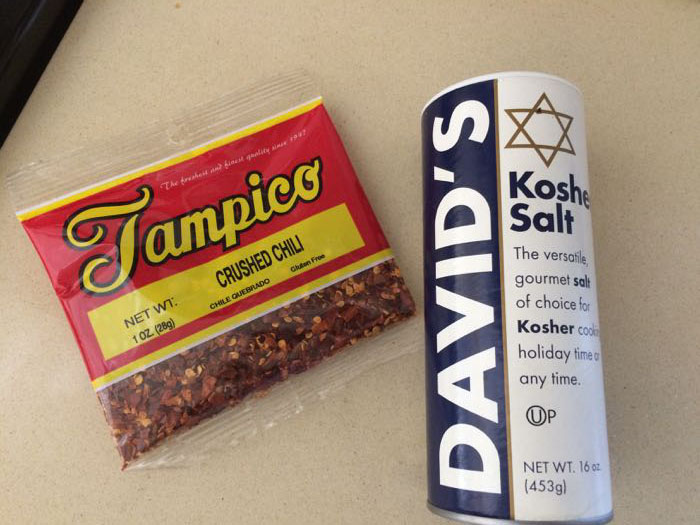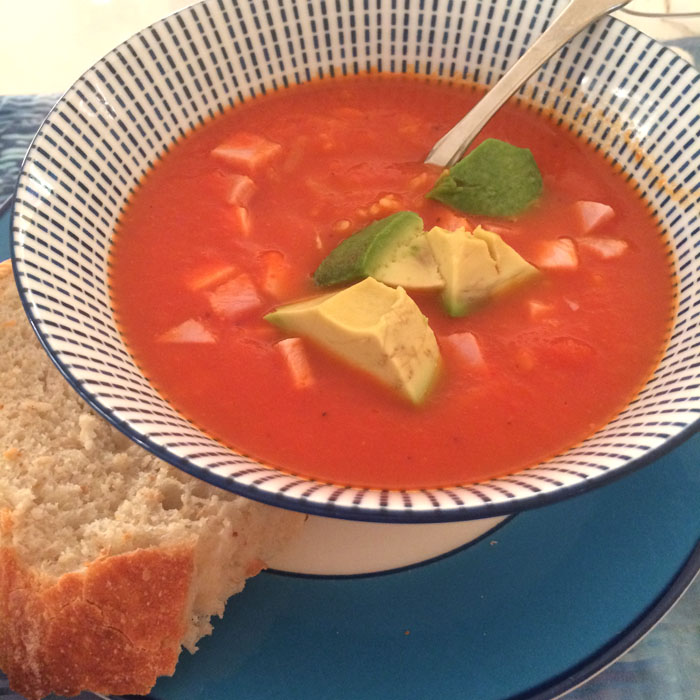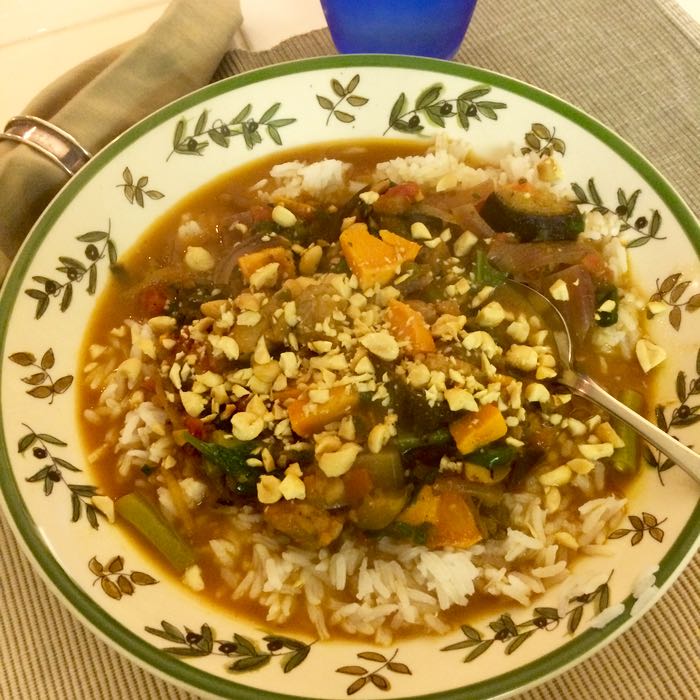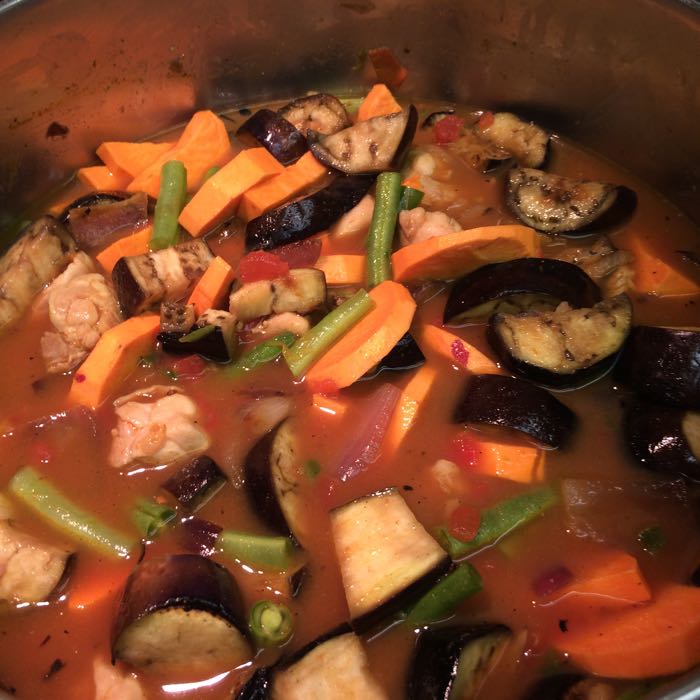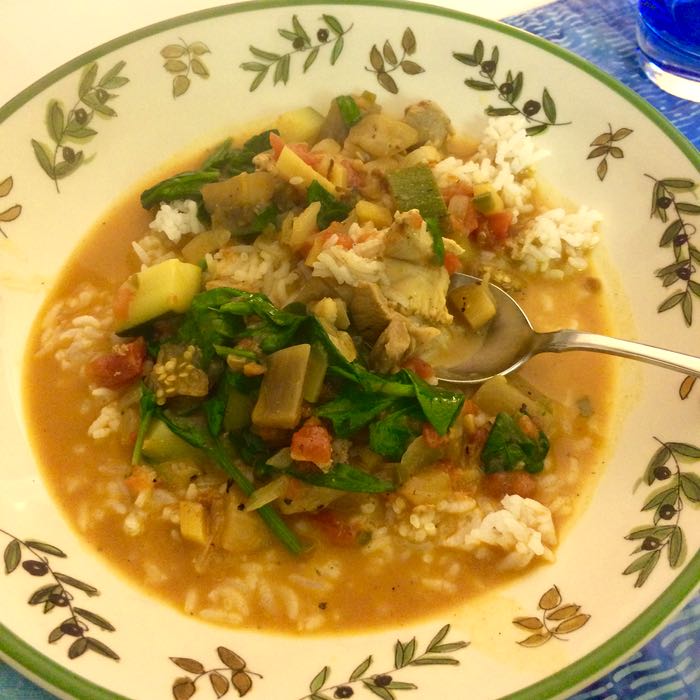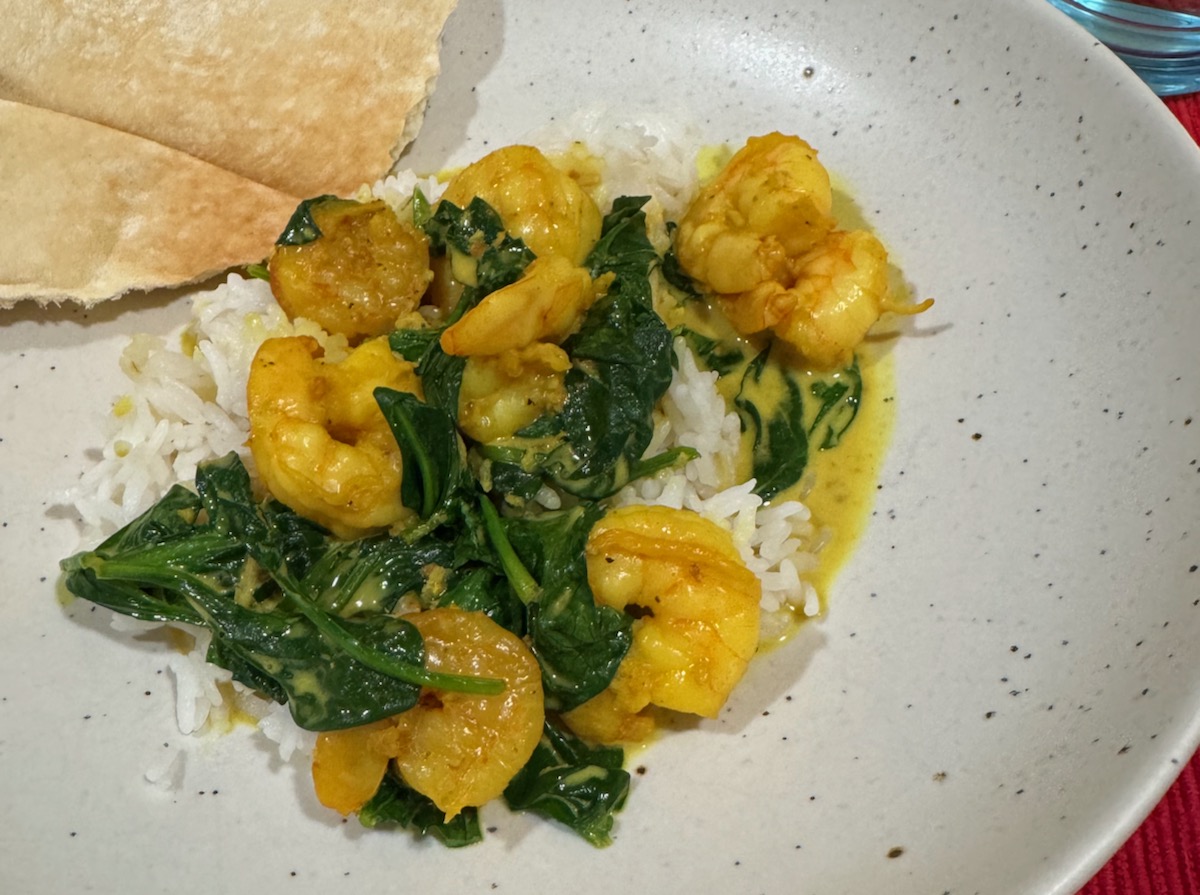
We had shrimp. We had coconut milk. We had ginger. And we even had the jalapeño (used only at the end for garnish.)
Isn’t that how most meals start, by looking in the cupboard? We didn’t have the spinach, but a quick trip to the grocery store took care of that. Originally published in the New York Times, I read through all of the comments and made some changes, reflected below. We really really liked this; my photo, taken on New Year’s Eve when the light was dim doesn’t do it justice. We used the 31-40 size of shrimp with the tails off. Certainly a bigger size or leaving on the tails would be flashier, but would taste the same.
While the original says serves four, we think more like three: two servings and one to share with an 86-year-old friend.
INGREDIENTS
4 large garlic cloves, grated
2 teaspoons grated ginger
1 teaspoon ground turmeric
2 teaspoons kosher salt (I use Diamond)
1 teaspoon black pepper (I use Penzy’s)
2 tablespoons olive oil
1 pound large shrimp, peeled and deveined, tails off
2 tablespoons vegetable oil
1 (14-ounce) can full-fat coconut milk
1 1/2 tablespoon soy sauce
3 packed cups baby spinach (or bok choy or kale)
1 lime, halved
1 fresno, jalapeño chile, thinly sliced into rings
2 scallions, white and light green parts, thinly sliced
Steamed rice for serving
PREPARATION
- In a mixing bowl, mix together the garlic, ginger, turmeric, salt, pepper and the olive oil. Add the shrimp and mix to coat well.
- In a large skillet or pot over medium-high heat, add the vegetable oil until it shimmers. Add the shrimp in an even layer and cook, undisturbed, for 2 minutes. Stir the shrimp while adding the coconut milk and soy sauce. Raise the heat to high and adjust it to maintain a simmer (avoid bringing to a boil), and cook until the liquid is slightly thickened and shrimp are almost cooked through, stirring occasionally, about 3 minutes. If you need more time for thickening, remove the shrimp to a bowl so they don’t overcook (I did this). Stir in the spinach in batches until wilted, and then add back in the shrimp, if needed.
- Remove from the heat and squeeze in the juice from a lime half. Adjust seasoning with more lime and salt as needed. Top with the chiles, scallions (and if you like, although not mentioned: roughly chopped cilantro and peanuts) and serve with rice, noodles or naan. (We show its with a pita bread, but naan would have been preferred.)
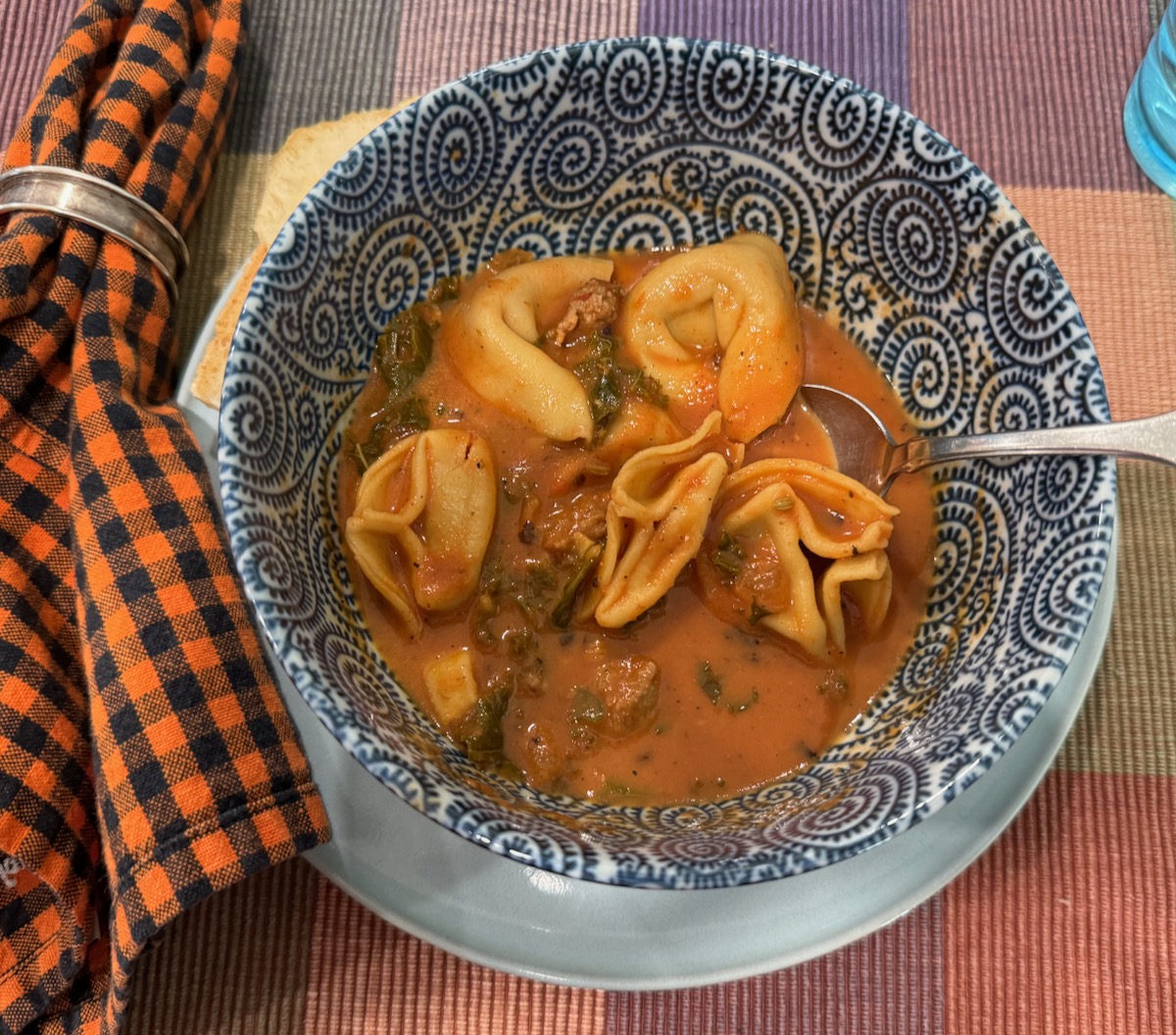
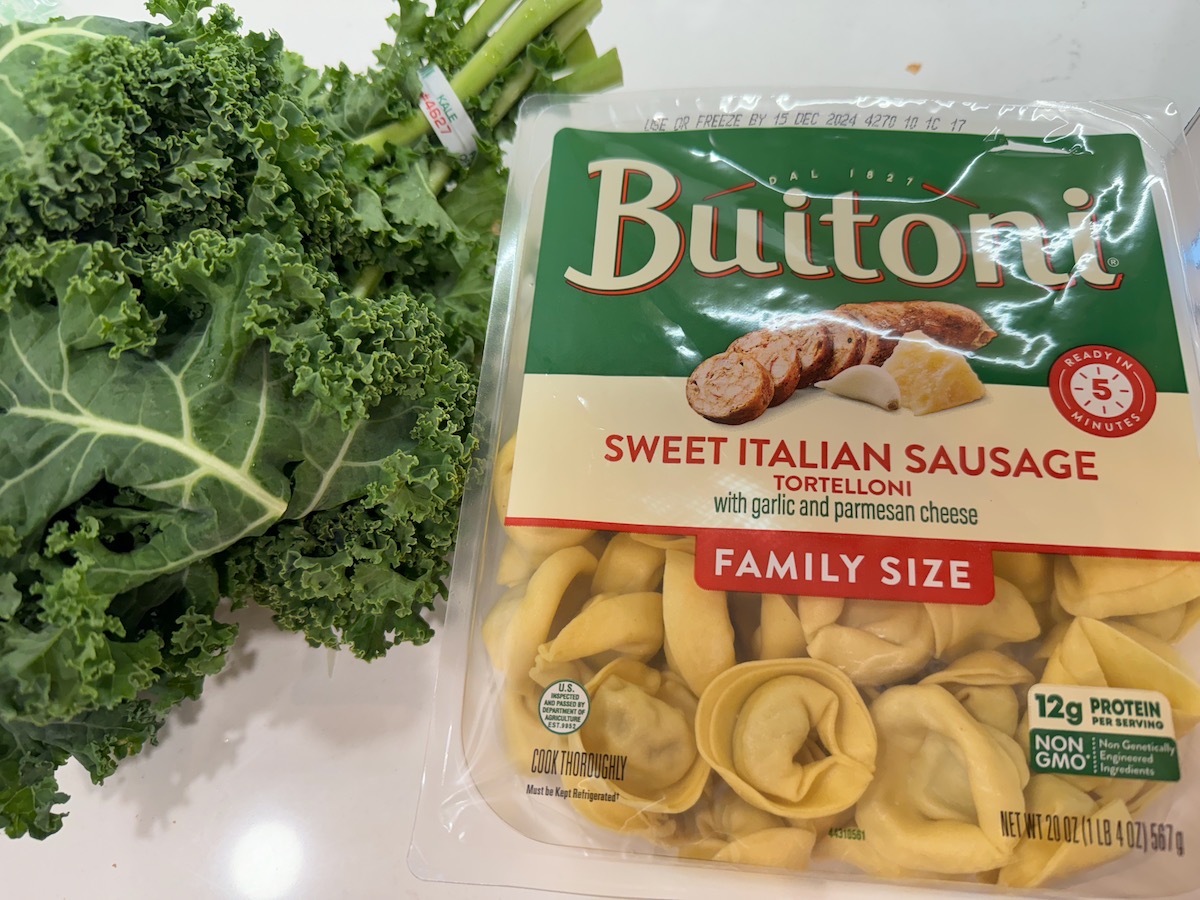
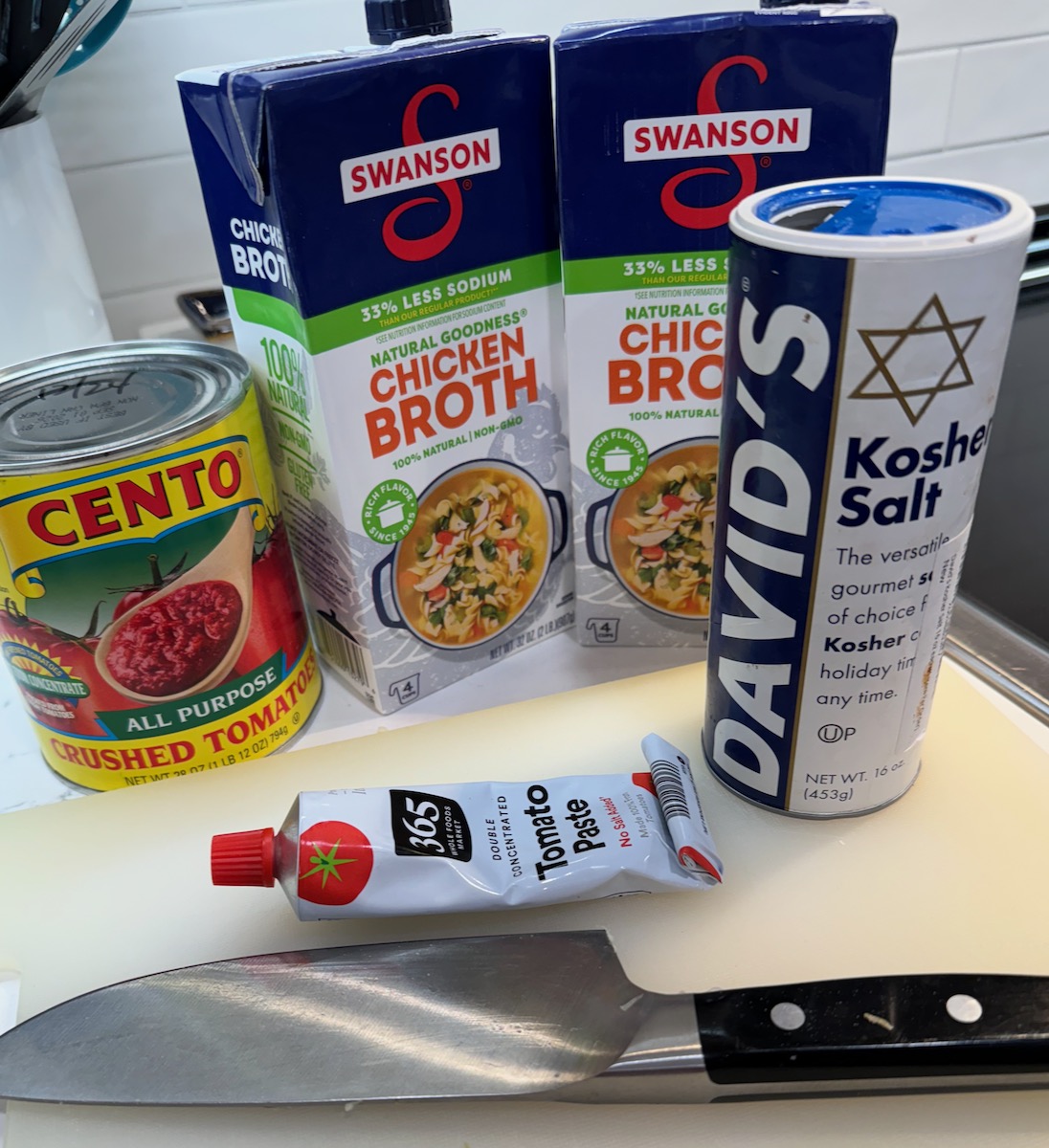
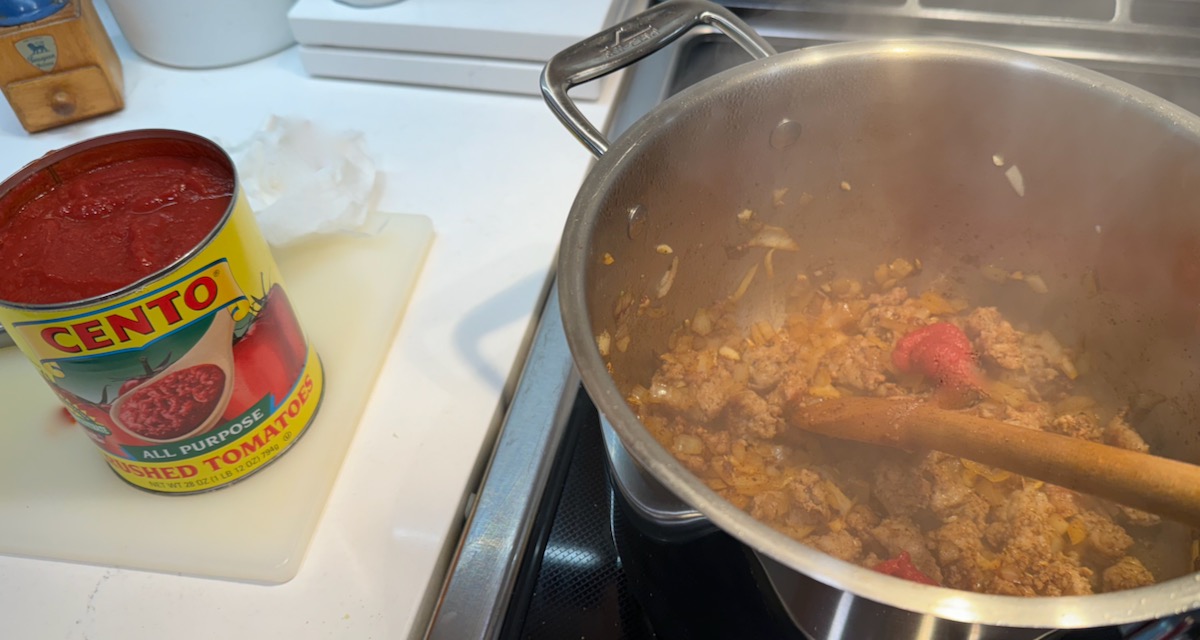

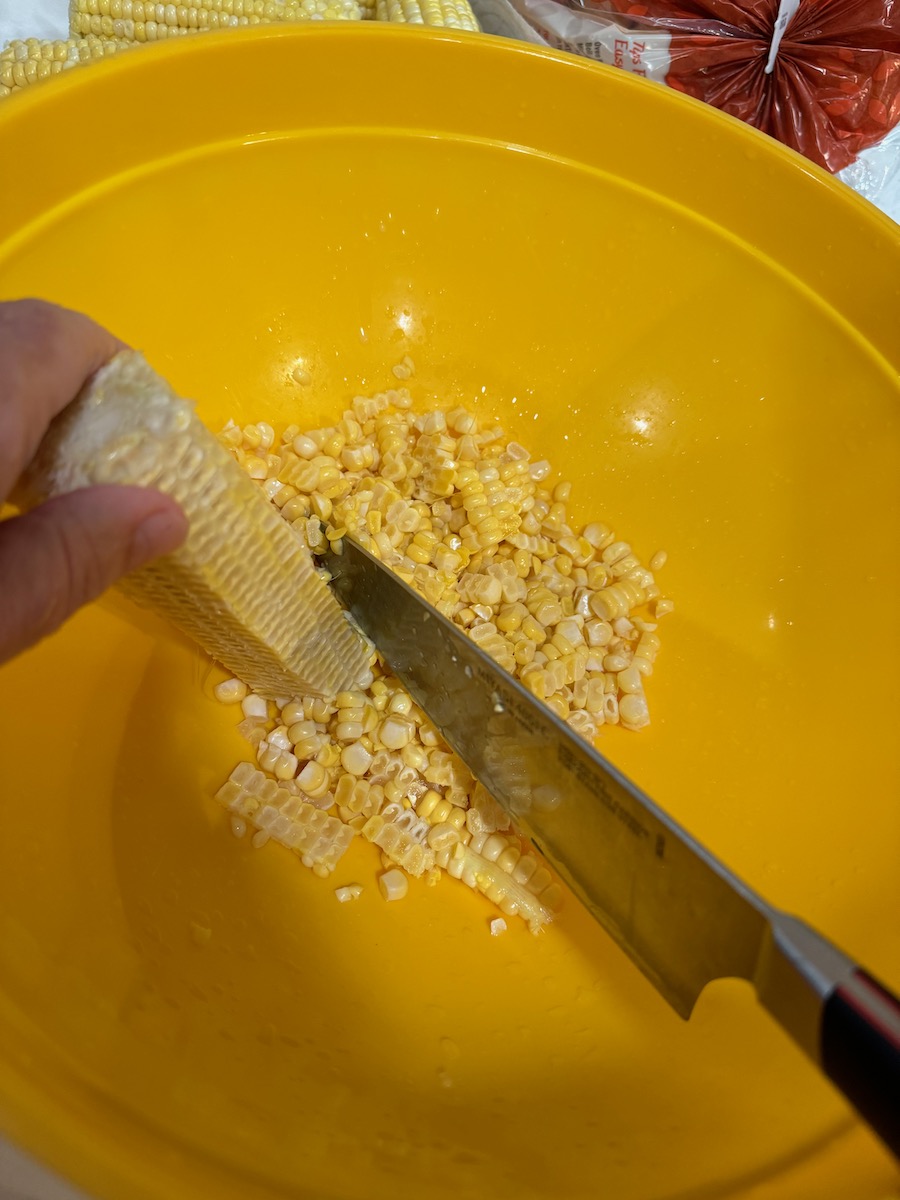
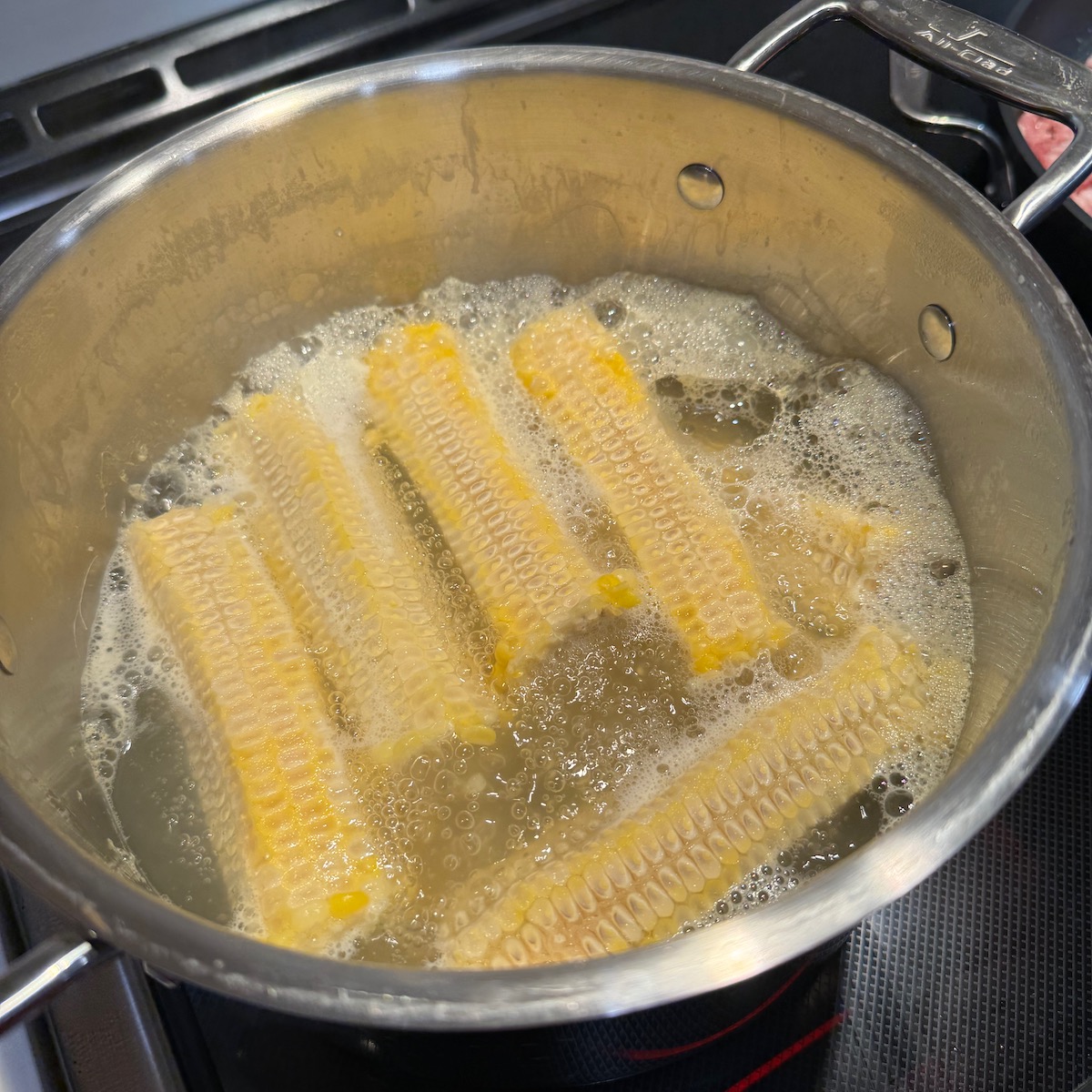
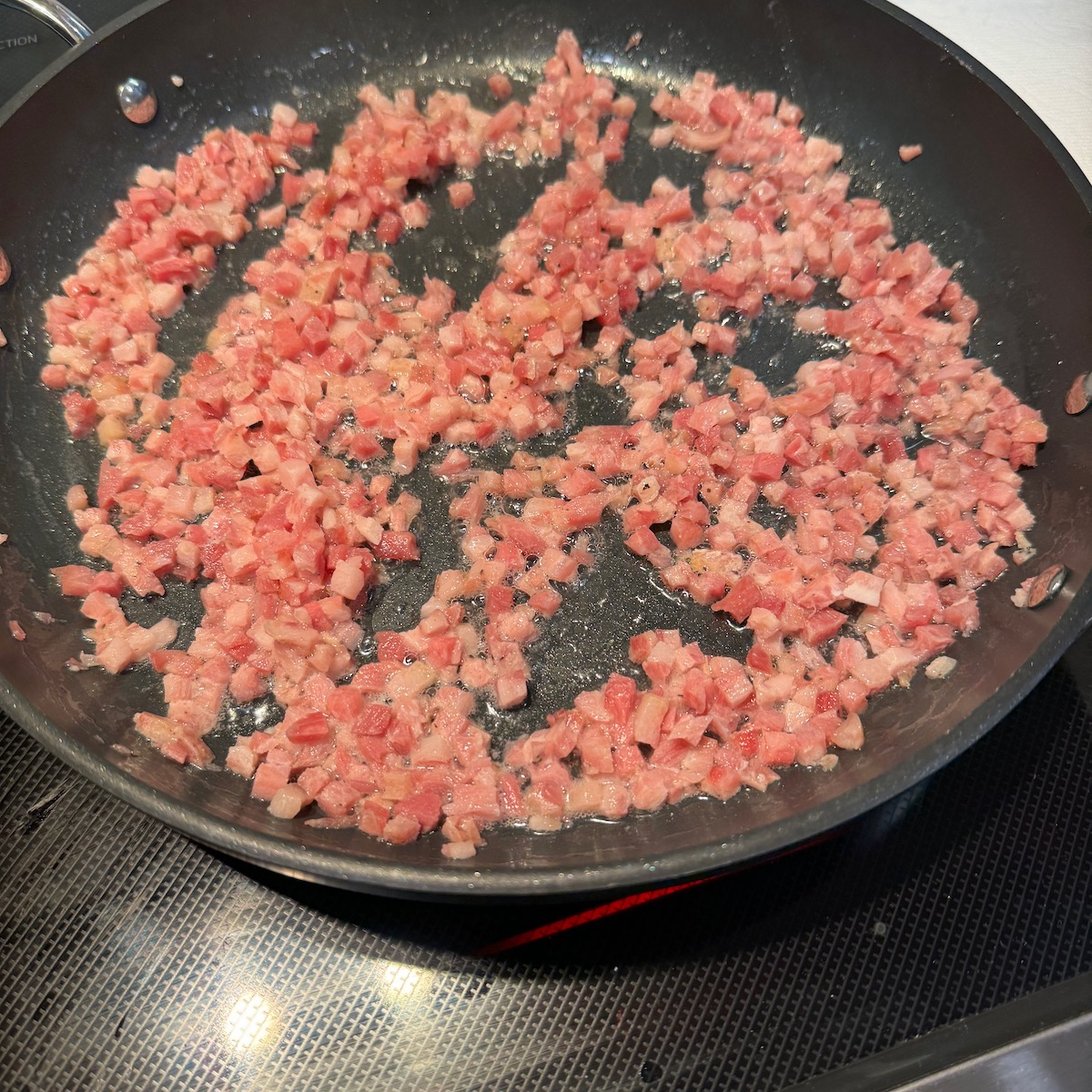
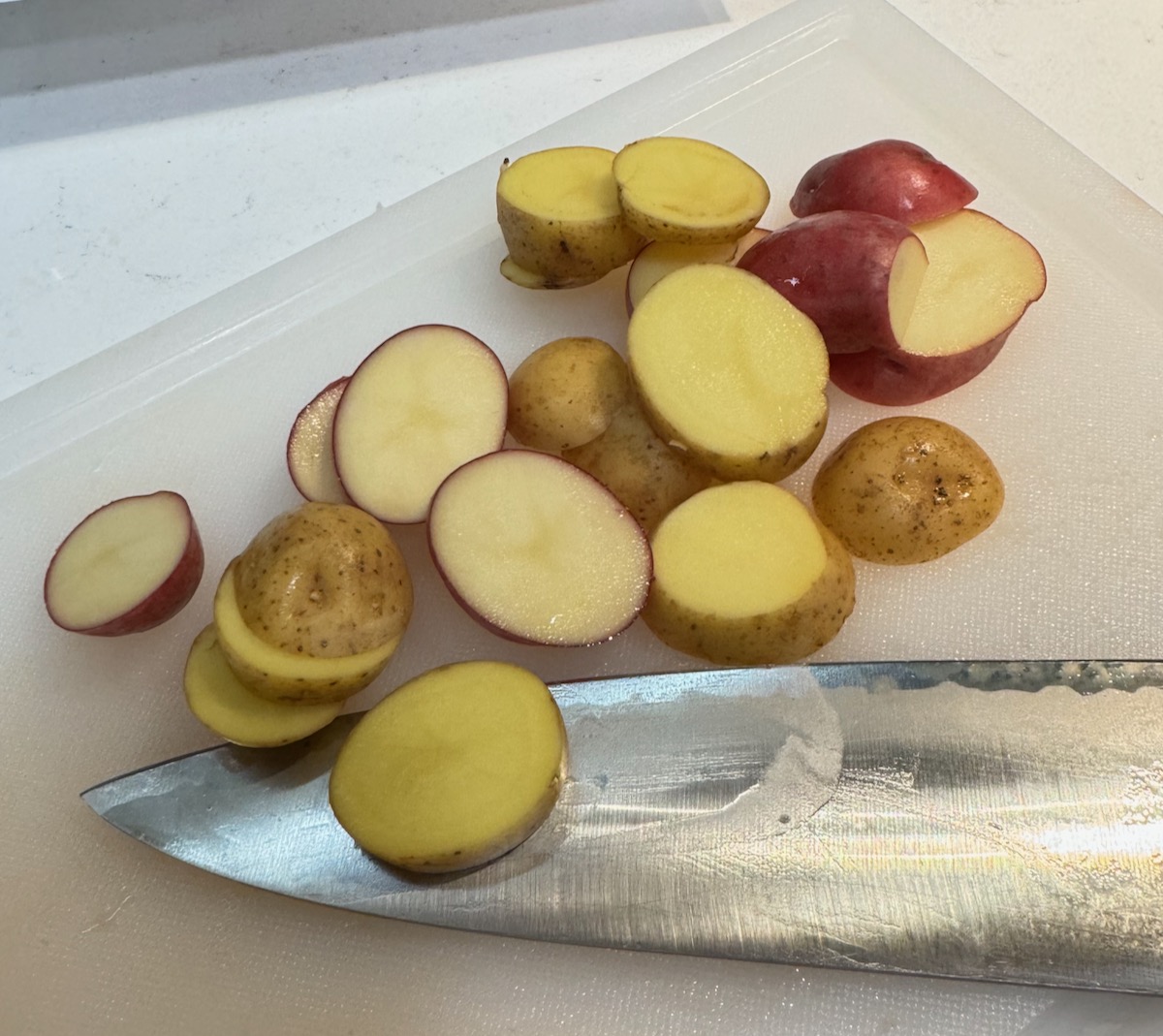

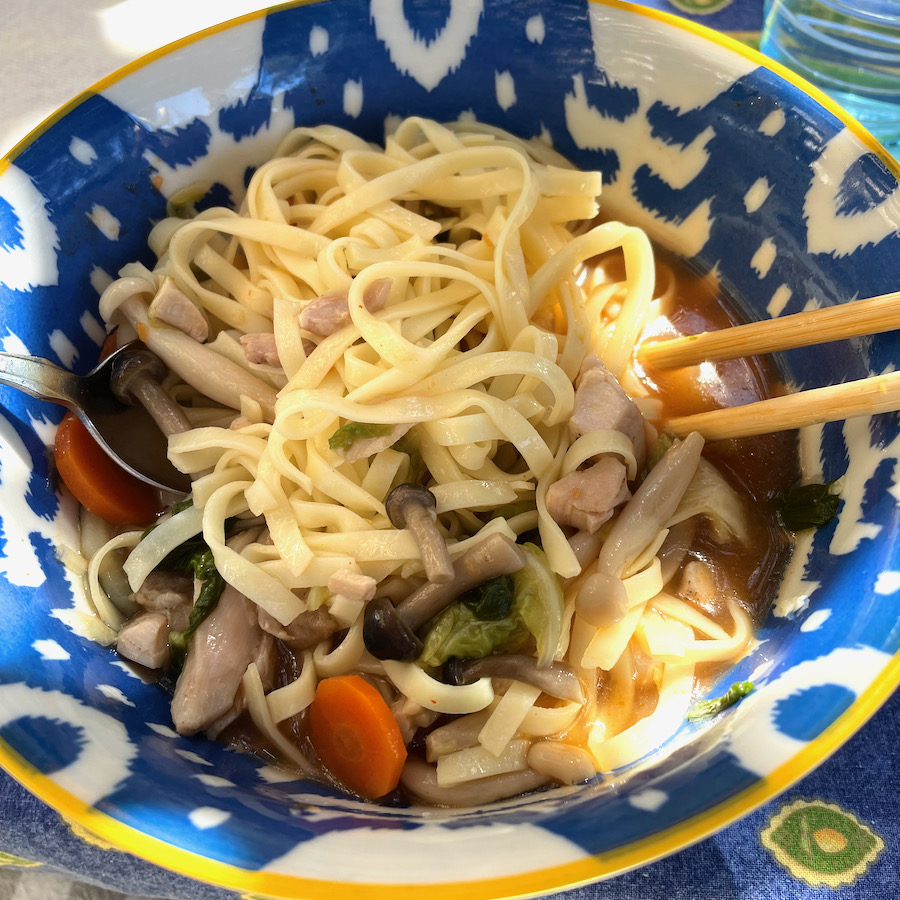
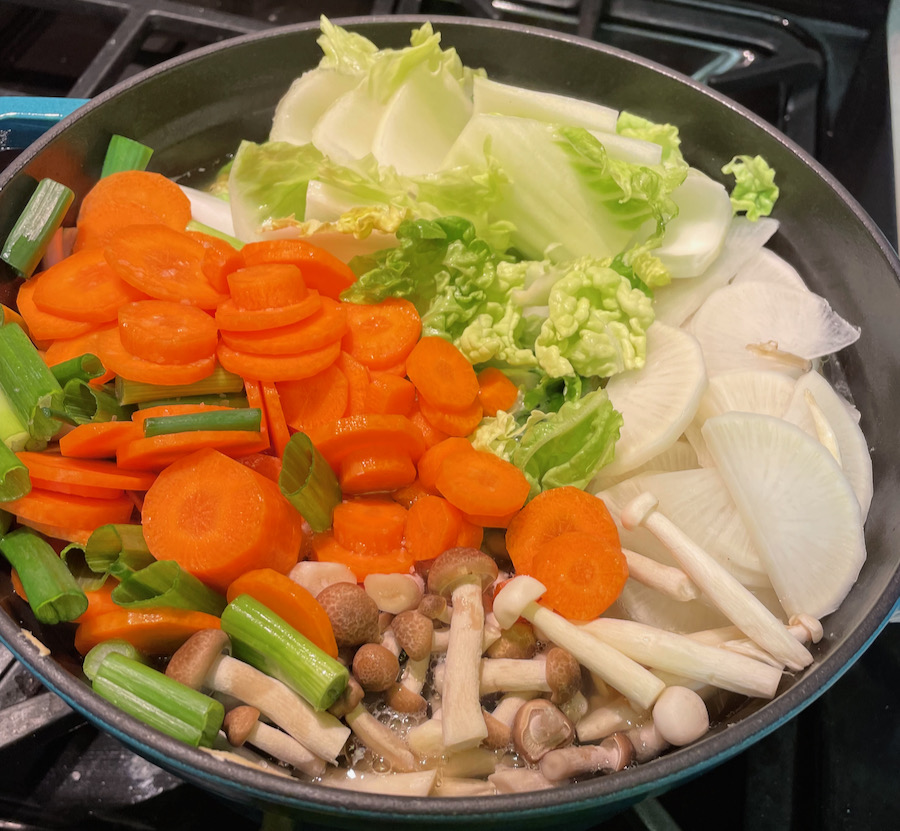
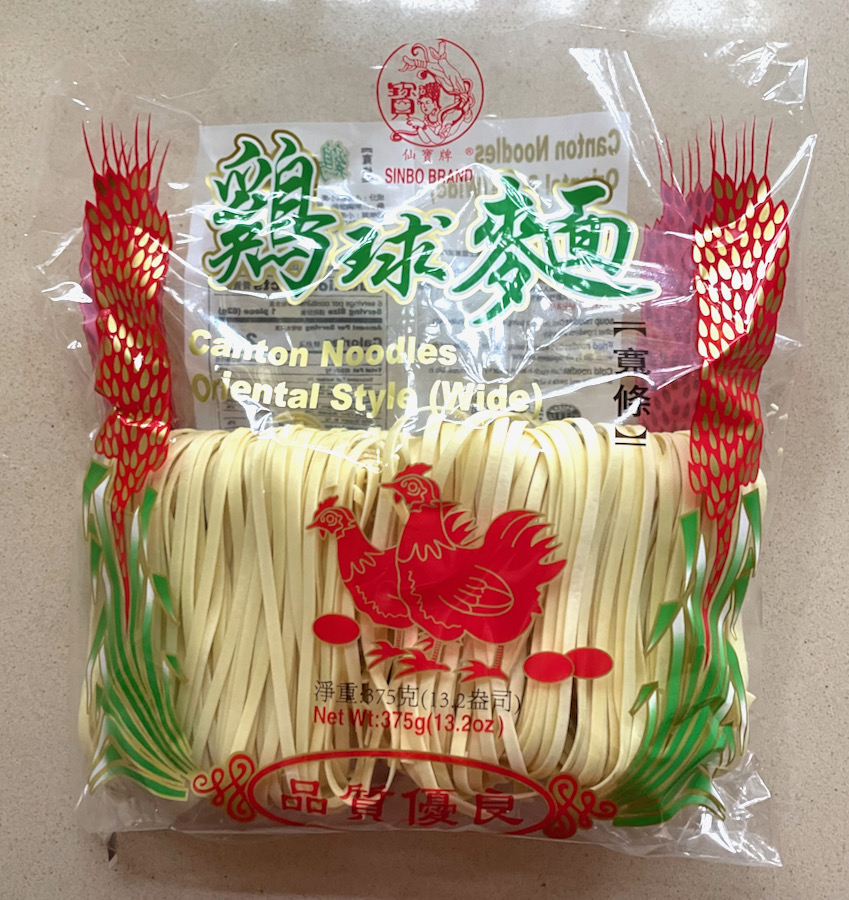
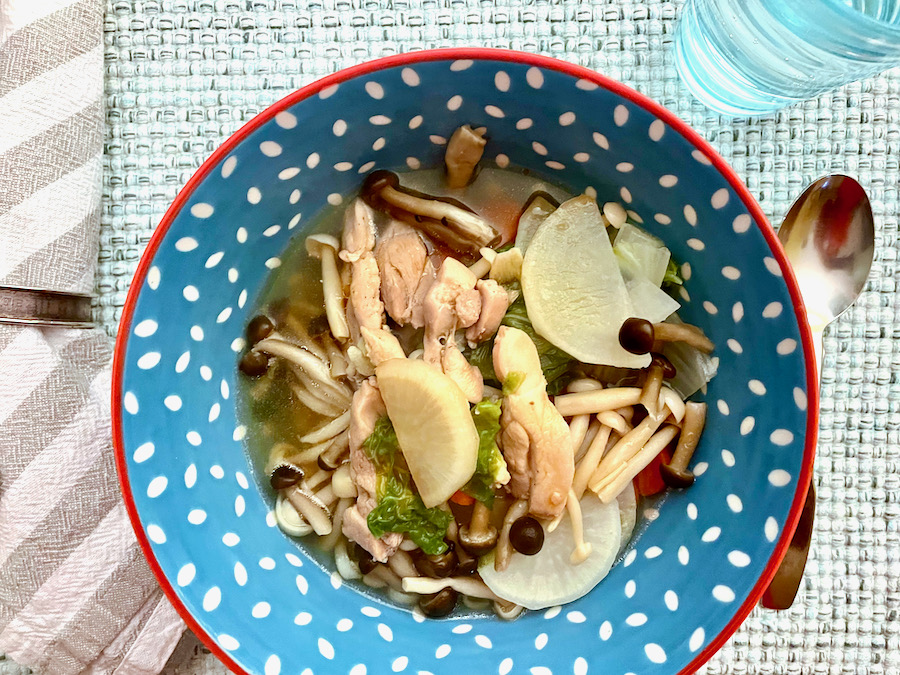
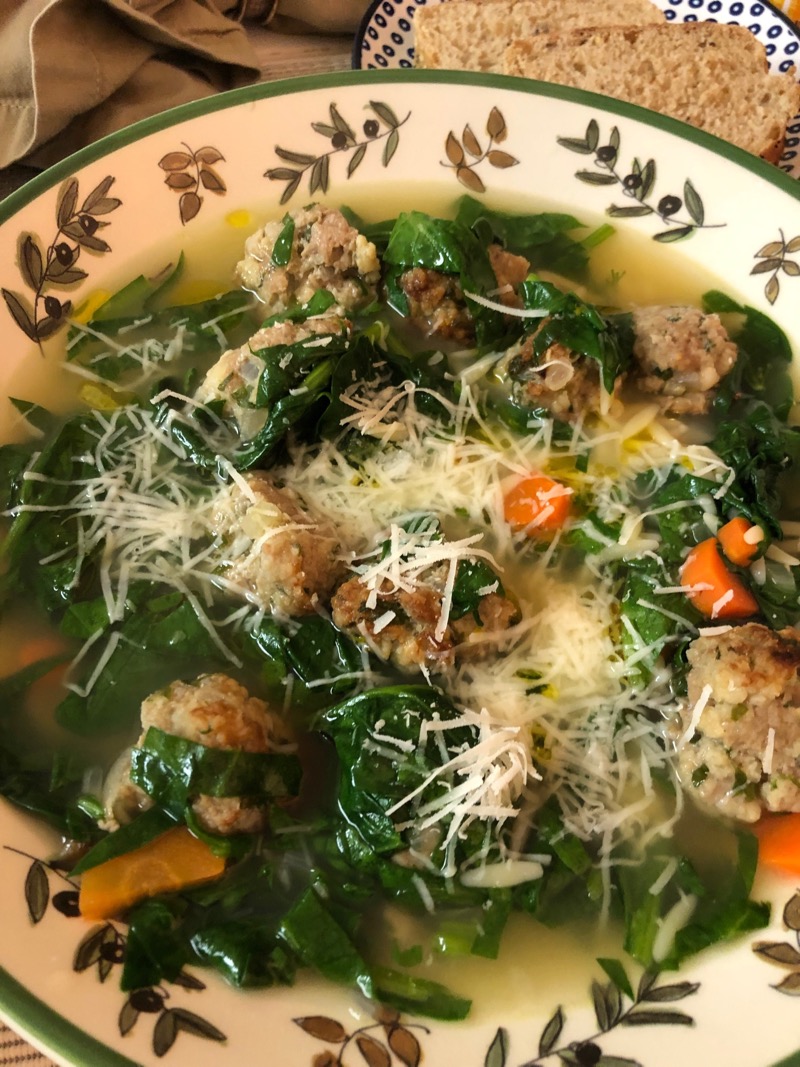
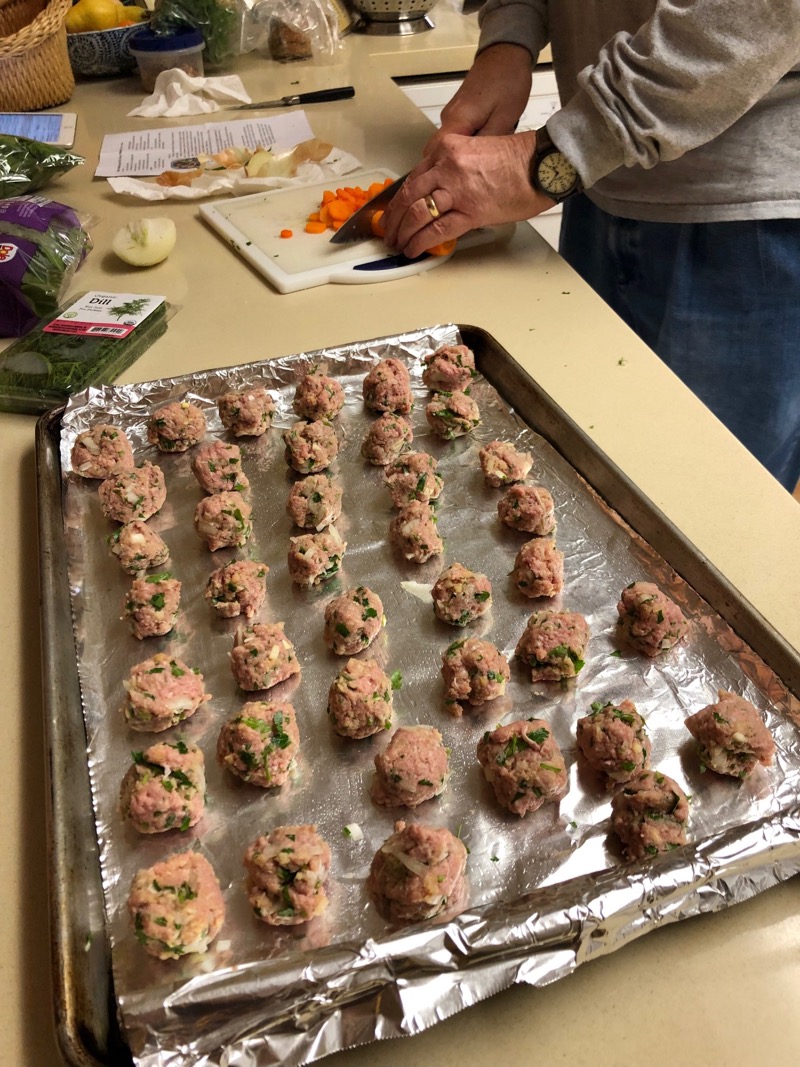
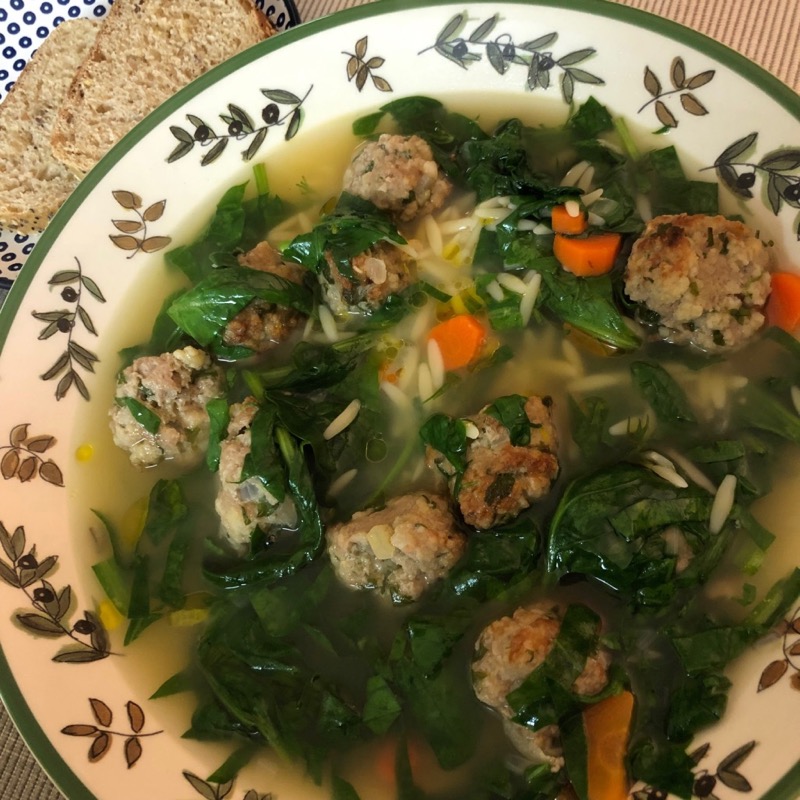
 It’s fall, so anything fall-colored seems to make its way to the menu, and that means a new recipe. While this has been published in several places, I read about it in the New York Times where it goes by the name of Lemony Carrot Cauliflower Soup, and is a recipe by the talented Melissa Clark. But I didn’t think the amount of lemon in it (added at the end) warranted an inclusion in the title, although it is a necessary ingredient.
It’s fall, so anything fall-colored seems to make its way to the menu, and that means a new recipe. While this has been published in several places, I read about it in the New York Times where it goes by the name of Lemony Carrot Cauliflower Soup, and is a recipe by the talented Melissa Clark. But I didn’t think the amount of lemon in it (added at the end) warranted an inclusion in the title, although it is a necessary ingredient.